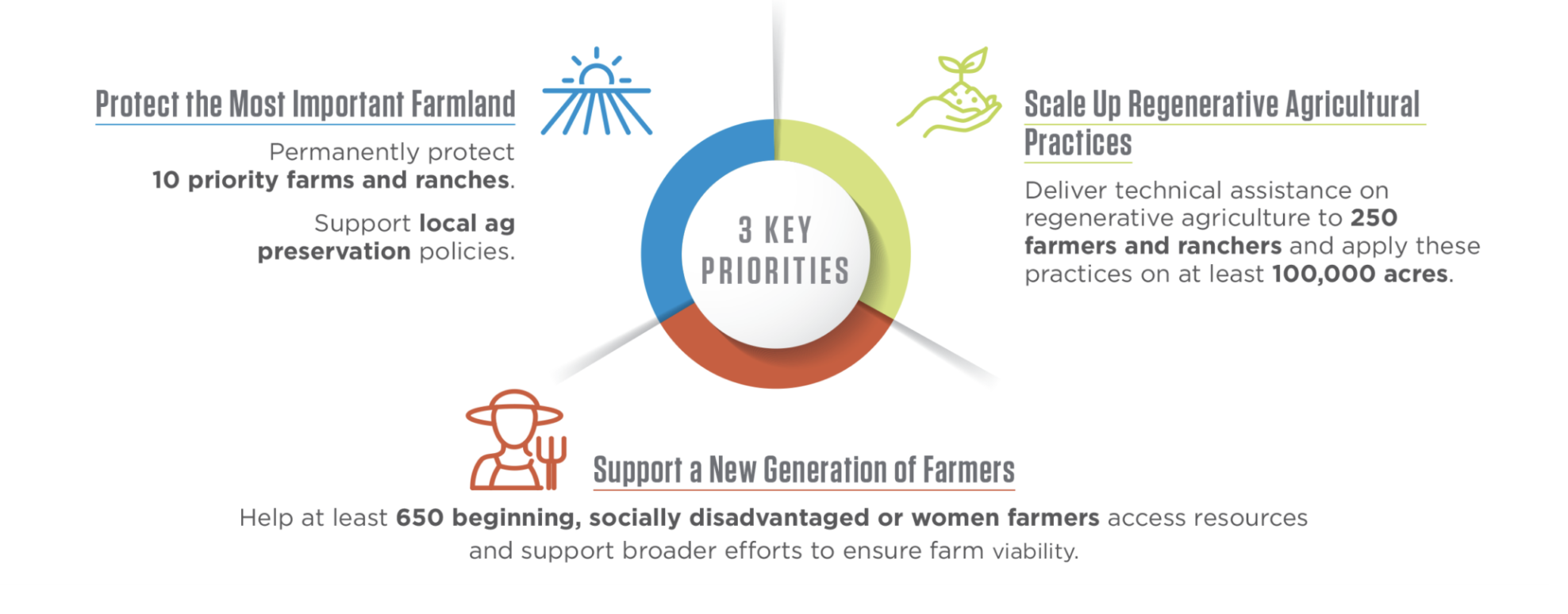San Joaquin Valley Land and Water Conservation Collaborative
The San Joaquin Valley Land and Water Conservation Collaborative; was created to conserve and protect California’s most productive agricultural region.
San Joaquin Valley Land and Water Conservation Collaborative
The SJVLWCC was created by the American Farmland Trust (AFT) and funded by the US Department of Agriculture’s Natural Resources Conservation Service (NRCS) under the Regional Conservation Partnership Program (RCPP) agreement. The primary goals of this 5-year program include protecting critical farmland, increasing regenerative agricultural practices, and supporting a new generation of farmers.


Supported Soil Health Practices
Soil health practices that improve soil water holding capacity and infiltration
- Conservation Cover
- Cover Crops
- Reduced Till
- No-till
- Soil Carbon Amendment, such as compost
- Irrigation Water Management
- Biochar
Land use enhancement
- Critical Area Planning (planning on sites with soil erosion vulnerability or other difficulty)
- Hedgerows
- Upland Wildlife Habitat Management
- Wildlife Habitat Planning
Water conveyance & recharge
Partners
- Local National Resources Conservation Service Field Offices
- Resource Conservation Districts: Sierra (Fresno County), East Stanislaus, East Merced, and Madera/Chowchilla
- The Freshwater Trust (TFT)
- Conservation Biology Institute (CBI)
- California Farmland Trust (CFT)

Technical Assistance
1. Conservation Planning Assistance: Free of charge service provided by the Sierra Resource Conservation District to create a conservation plan that will be used during the application process and as a useful tool for your agricultural land. A conservation plan could be used to help manage the soil, water, air, plants, and animals on your farm. It also offers alternative options that can address specific conditions on your land.
2. Land Management/Implementation: The San Joaquin Valley Land and Water Conservation Collaborative has 15 implementation practices in place out of the 100 nationwide practices from EQIP. The practices that provide the most potential economically and productively for your farmland could be implemented.
3. Land Rentals: Repurposing land to take the stress off of the farmers and area. Land rentals prevent prime agricultural land from being sold to developers. While also restoring the land by temporarily repurposing it.
4: Conservation Easements: The purchase or donation of the developmental rights to agricultural land from a farmer or rancher. This ensures that the land remains in agriculture permanently, without the chance of being converted to new development.

Five-Year Goals


Contact Us
If any of these services or goals align with a conservation plan or agricultural land you have in mind, please contact Karin Roux for additional information or inquiries.
Conservation Technician: Mason Roth
Contact Information: mroth@sierrarcd.com